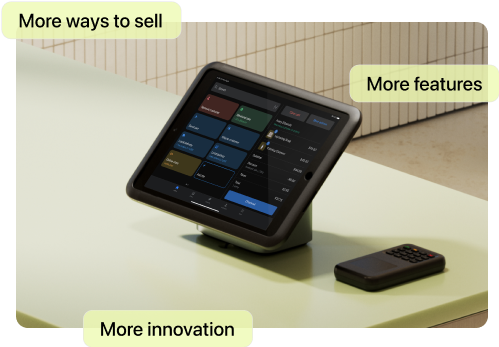When you start email marketing, you might be tempted to send the same message to your entire email list to get as many views as possible. But seasoned marketers know it’s often better to send targeted messages to a specific segment of your audience—a practice known as direct email marketing.
Direct email marketing allows you to target different potential customers with the content that is most likely to engage them. “Over time, we’ve become a lot better in making sure that specific messages are tailored to the right audience,” Adam Davis, former senior marketing manager of Magnolia Bakery, says on an episode of the Shopify Masters podcast.
In this guide, you’ll learn how to create a direct email marketing campaign (and measure its success) with tips from Adam and other marketing pros.
What is direct email marketing?
Direct email marketing is a marketing strategy whereby a business intentionally targets an individual or audience segment with highly relevant messages. It includes automated email campaigns triggered by specific actions like abandoning a cart, as well as messages sent to a group of users with shared characteristics like location or purchase history.
If your emails aren’t relevant to your audience, they can be perceived as spammy. For example: “Not everyone in New York City is going to be interested in the fact that we’re launching in Gelson’s, which is a supermarket in LA,” Adam says. With direct email marketing, you can instead focus on the subscribers most likely to open your emails, which can improve email deliverability and conversion rates.
How to create a successful direct email marketing campaign
- Define your goals
- Build and maintain your email list
- Segment your audience
- Personalize your emails
- Include a clear call to action
- Write a clever subject line
- Design for mobile
- Consider frequency
Not every email needs to go to every customer. Here’s how to decide who gets what and increase the chances your audience will open their emails and take action:
1. Define your goals
Effective email campaigns begin with clear goals. Start by defining what those are. Are you trying to target a new audience that is unfamiliar with your brand, or are you trying to retain loyal customers?
The goal determines a lot about your marketing campaign. It helps you decide how to segment your market, the best language to draft a marketing message, and the right offers to engage your target audience.
Adam recommends looking at your analytics tool for inspiration (Magnolia Bakery uses Shopify’s built-in analytics.) “Look at the analytics tab on Shopify at a very high level before you drill into the details of, ‘OK, let’s look at customer types. Let’s look at marketing channels,” Adam says. “It’ll give you a good picture that will probably flip a switch in your head and say, ‘OK, there’s some macro things going on here.’”
2. Build and maintain your email list

Before you can send marketing emails, you need to build an email list. Desirae Odjick, a senior marketing lead at Shopify who has worked on Shopify Email, recommends offering an incentive to anyone who signs up for your email list. For example, Magnolia Bakery uses a website pop-up to encourage users to sign up for its email list in exchange for 10% off their first order.
“You have to show the value of joining your email list. Discounts are a really easy way to do it. Everyone understands the discount,” Desirae says. “But there are other reasons people will give you their email address, and you just have to be clear and concise on your form of what is the benefit.”
Once you build a mailing list, you can use one of the many email marketing services to manage your list, segment your audience, and remove inactive users to maintain a high email engagement.
3. Segment your audience
Audience segmentation is at the heart of direct email marketing. It’s what allows you to ensure the right emails go to the right subscribers. When you segment your audience into subgroups and target each of them with relevant email campaigns, this can drive click-through rates and ultimately conversion.
“You can create segments based on basically any customer data that you have in Shopify,” Desirae says. For example, Magnolia Bakery segments customers based on order history.
“If a customer’s ordering a pie for Thanksgiving, we want to make sure that Shopify is tagging that customer as such. So that next Thanksgiving, we could just import that list into our email database and just send an email about pies to people we know who have purchased pies in the past,” Adam says.
4. Personalize your emails
Email marketing works best when the emails feel like they were written with the recipient in mind, making it a powerful tool for engagement. The easiest way to do this is by using the recipient’s name.
“The research supports that adding somebody’s first name into the subject line of an email significantly improves the likelihood that they will open that email, they will engage with that email, and decreases the likelihood they will unsubscribe,” Neil Hoyne, chief strategist at Google, says on an episode of Shopify Masters.
But there are many ways to personalize an email beyond using the recipient’s name. Personalized emails can include product recommendations based on previous purchases or timely reminders to restock a previously bought item.
For example, take a look at this automated email from the beauty brand ILIA. It reminds the customer to repurchase the company’s True Skin Serum Foundation, which, by ILIA’s estimate, the customer is probably running low on:

5. Include a clear call to action
Email campaigns are often more successful when they include a clear call to action (CTA) that tells the reader exactly what to do next.
Strong CTAs are often both simple and visible. For example, if you are sending an abandoned cart reminder, including a link to the customer’s cart makes it easier for the customer to quickly complete their purchase. This is a good example of an abandoned cart email from Crap Eyewear. It is a clear and direct email featuring a simple photograph of the product in the cart and a link to return to the cart:

6. Write a clever subject line
There are several steps to get customers to click through to your desired landing page and to eventually make a purchase. Choosing the correct subject line is one of the first steps. A clever subject line can create a lasting impression about your brand and influence whether or not the email recipient is going to click on your message.
One good example: The emails clothing brand Everlane sends to customers who have just purchased a product on its website. To those customers, Everlane sends a pithy email under the subject line, “You have great taste.” This subject line not only flatters the recipient, but it also creates an opening to recommend products they are likely to click on.

7. Design for mobile
It’s crucial to pay attention to how an email displays on mobile devices. Most people read their emails on their phone, so it’s best practice to design with mobile-responsive email templates. Email marketing services offer design tools that automatically adjust your layout for different screen sizes, and can be great tools for landing the right design.
8. Consider frequency
The goal of direct email marketing is to build and maintain customer relationships with emails that feel relevant, not spammy. But even the most targeted, personalized emails can fall short if they come too frequently, or at the wrong time.
“I have seen that opt-outs and unsubscribes really peak when there’s no key message in the market, when it’s not ‘Order ahead for a specific thing’ and it’s just, ‘We’re Magnolia Bakery, order our dessert,’” says Adam. Instead of sending emails with no clear hook, Adam uses those “down periods” to focus on other marketing channels, like retargeting ads.
Important metrics for direct email marketing
An email campaign isn’t finished once you hit Send. Monitor your campaign’s performance and take those learnings into the next one. Here are a few email marketing metrics to consider:
- Open rate. Open rate measures how many people actually open your emails. A good open rate varies by industry, but generally, you’ll want to aim for around 20% to 40%, taking into account the impact of spam filters.
- Click-through rate (CTR). CTR measures how many people clicked a link within your email, such as a subscription button or a product image. A good CTR to aim for is around 2% to 5%, according to Salesforce.
- Conversion rate. Conversion rate measures the end goal of any direct email marketing campaign. It reflects how many people took a desired action, like making a purchase, as a result of your email. A good email conversion rate is around 2% to 5%.
Direct email marketing FAQ
What is direct email marketing?
Direct email marketing is an email marketing practice where businesses send promotional material directly to relevant customers. The marketing strategy allows businesses to address individual customers and groups of customers with their individual habits and tastes in mind.
What are the four types of email marketing?
The four main types of email marketing are promotional emails, transactional emails, life cycle emails, and newsletters. Life cycle emails include welcome emails, abandoned cart reminders, and newsletters.
How do you measure the success of direct email marketing?
There are several ways to measure the success of a direct email marketing campaign. Some of the most popular metrics are open rate, click-through rate (CTR), and conversion rate. A good open rate is 20% to 40%, a good CTR is around 2% to 5%, and conversion rates average 2% to 5%. Email marketing platforms and email service providers offer analytics tools that can help you track email engagement within your email list.







